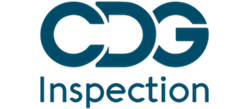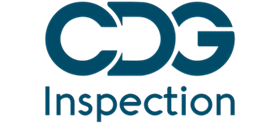Introduction:
In the world of pharmaceuticals and biotechnology, ensuring the safety, quality, and efficacy of medicinal products is paramount. Regulatory agencies around the world have established guidelines and standards to govern the manufacturing and distribution of pharmaceuticals. Two significant sets of regulations that play a pivotal role in this industry are the European Union Good Manufacturing Practice (EU GMP) and the Current Good Manufacturing Practices (cGMP) in the United States. CDG Inspection Limited, a renowned consultancy firm specializing in pharmaceutical quality and compliance, is well-versed in both these regulatory frameworks. This comprehensive guide aims to explore the key differences between EU GMP and cGMP, shedding light on how CDG Inspection Limited assists pharmaceutical companies in navigating these complex regulatory landscapes.
Regulatory Frameworks: EU GMP vs. cGMP
European Union Good Manufacturing Practice (EU GMP)
EU GMP is a set of regulations and guidelines that govern the manufacturing, distribution, and quality control of pharmaceuticals within the European Union (EU) and the European Economic Area (EEA). The primary objective of EU GMP is to ensure that medicinal products are consistently produced and controlled to meet the required quality standards for their intended use. The regulations are detailed in Volume 4 of the European Union Guidelines for Good Manufacturing Practice for Medicinal Products for Human and Veterinary Use.
Current Good Manufacturing Practices (cGMP)
cGMP is the equivalent set of regulations in the United States, overseen by the Food and Drug Administration (FDA). cGMP regulations ensure that pharmaceutical products are safe, effective, and meet their intended specifications. These regulations are outlined in Title 21 of the Code of Federal Regulations (CFR) in parts 210 and 211, among others.
CDG Inspection Limited: Expertise in Regulatory Compliance
CDG Inspection Limited is a leading consultancy firm with a deep understanding of pharmaceutical regulations, including EU GMP and cGMP. The company offers a wide range of services to assist pharmaceutical manufacturers in achieving and maintaining compliance with these stringent standards.
EU GMP Compliance Services
CDG Inspection Limited provides comprehensive EU GMP compliance services, including:
- Gap Analysis: Identifying gaps in current practices compared to EU GMP requirements.
- Quality Management Systems (QMS) Implementation: Developing and implementing robust QMS in line with EU GMP.
- Audit Preparation: Assisting clients in preparing for regulatory inspections by competent authorities.
- Documentation and Record Keeping: Ensuring proper documentation practices, including batch records and validation documents.
- Training and Education: Offering training programs to enhance staff understanding of EU GMP.
- Regulatory Liaison: Serving as a bridge between clients and regulatory authorities during inspections.
cGMP Compliance Services
CDG Inspection Limited’s cGMP compliance services encompass:
- cGMP Audits: Conducting thorough audits to assess compliance with FDA regulations.
- Validation Support: Assisting in the validation of manufacturing processes and equipment.
- Quality Assurance: Establishing and enhancing quality assurance systems to meet cGMP requirements.
- Remediation and Corrective Action Plans: Developing strategies to address compliance deficiencies.
- Regulatory Submissions: Supporting clients in preparing and submitting applications to the FDA.
- cGMP Training: Providing tailored training programs to educate staff on cGMP principles.
Key Differences Between EU GMP and cGMP
Understanding the differences between EU GMP and cGMP is crucial for pharmaceutical companies operating in both regions. CDG Inspection Limited plays a pivotal role in helping clients navigate these distinctions.
Scope of Regulations
One fundamental difference between EU GMP and cGMP is their scope. EU GMP regulations apply to the European Union and the European Economic Area, while cGMP regulations are specific to the United States. Pharmaceutical companies must adhere to the regulations of the region in which they intend to market their products.
Legal Framework
EU GMP is harmonized across the member states of the European Union, providing a consistent regulatory framework. In contrast, cGMP regulations in the United States are federal laws outlined in the CFR. The legal basis for these regulations differs, but both aim to achieve the same goal of ensuring product quality and patient safety.
Regulatory Authorities
EU GMP compliance is overseen by various national competent authorities in EU member states, such as the Medicines and Healthcare products Regulatory Agency (MHRA) in the UK and the European Medicines Agency (EMA) at the European level. On the other hand, cGMP compliance falls under the jurisdiction of the FDA in the United States.
Inspection Procedures
The procedures for inspections under EU GMP and cGMP differ. In the EU, inspections are often conducted by national competent authorities, and the frequency may vary depending on factors such as the product’s risk level. In the United States, the FDA conducts inspections regularly and may also assess a facility’s compliance history.
Documentation Requirements
Both EU GMP and cGMP require comprehensive documentation of manufacturing and quality control processes. However, specific documentation requirements and formats may differ. CDG Inspection Limited assists clients in aligning their documentation practices with the relevant regulatory standards.
Terminology and Standards
There are differences in terminology and standards between EU GMP and cGMP. For example, the EU uses the term “qualified person” (QP) for the individual responsible for certifying the release of a batch, while the United States uses the term “responsible person.” CDG Inspection Limited helps clients understand and adopt the appropriate terminology and standards for their target market.
Packaging and Labeling
EU GMP and cGMP also have variances in requirements related to packaging and labeling. CDG Inspection Limited provides guidance on compliance with these specific aspects, ensuring that products meet the regulatory requirements of the intended market.
CDG Inspection Limited’s Approach to Bridging the Gap
Navigating the differences between EU GMP and cGMP can be challenging for pharmaceutical companies seeking to operate in both markets. CDG Inspection Limited offers a tailored approach to bridge the gap between these regulatory frameworks.
Regulatory Intelligence
CDG Inspection Limited maintains a team of experts well-versed in the latest developments and updates in both EU GMP and cGMP. The company continuously monitors regulatory changes, ensuring that clients are informed and prepared to adapt to evolving requirements.
Cross-Training
To facilitate compliance with both EU GMP and cGMP, CDG Inspection Limited offers cross-training programs. These programs educate personnel about the key differences between the two regulatory frameworks and equip them with the knowledge to implement compliant practices.
Documentation Harmonization
Harmonizing documentation practices is critical for companies operating in multiple markets. CDG Inspection Limited assists clients in developing standardized documentation that aligns with both EU GMP and cGMP requirements, reducing the risk of errors and non-compliance.
Regulatory Liaison
CDG Inspection Limited acts as a liaison between pharmaceutical companies and regulatory authorities in both the EU and the United States. The company helps clients navigate the complexities of inspections, audits, and interactions with competent authorities, ensuring a smooth compliance process.
Risk Assessment
Assessing and managing risks associated with regulatory compliance is essential. CDG Inspection Limited conducts thorough risk assessments to identify potential compliance issues and develop mitigation strategies to minimize these risks.
Case Study: CDG Inspection Limited’s Success in Bridging Regulatory Gaps
To illustrate how CDG Inspection Limited helps pharmaceutical companies bridge the regulatory gaps between EU GMP and cGMP, we present a case study:
Case Study: XYZ Pharmaceuticals
XYZ Pharmaceuticals is a European-based pharmaceutical company that sought to expand its market presence in the United States. The company had been operating in compliance with EU GMP for several years but needed to align its practices with cGMP to gain FDA approval for its products.
CDG Inspection Limited was engaged to assist XYZ Pharmaceuticals in this endeavor:
Gap Analysis
CDG Inspection Limited conducted a comprehensive gap analysis of XYZ Pharmaceuticals’ existing quality systems and manufacturing processes. This analysis highlighted the areas where the company’s practices needed to be adapted to meet cGMP requirements.
Cross-Training
CDG Inspection Limited organized cross-training sessions for XYZ Pharmaceuticals’ personnel. The training covered key differences between EU GMP and cGMP, emphasizing the aspects that were most relevant to the company’s operations.
Documentation Harmonization
Working closely with XYZ Pharmaceuticals, CDG Inspection Limited harmonized the company’s documentation practices. This included revising standard operating procedures (SOPs), batch records, and quality control documents to meet both EU GMP and cGMP standards.
Regulatory Liaison
CDG Inspection Limited served as a liaison between XYZ Pharmaceuticals and the FDA during the inspection process. The company assisted in preparing for FDA inspections and ensured that the inspection went smoothly, resulting in FDA approval for XYZ Pharmaceuticals’ products.
Ongoing Compliance Support
Even after FDA approval, CDG Inspection Limited continued to provide ongoing compliance support to XYZ Pharmaceuticals. This included periodic audits, regulatory updates, and assistance with post-approval changes and submissions.
As a result of CDG Inspection Limited’s comprehensive approach, XYZ Pharmaceuticals successfully expanded its operations into the United States, achieving compliance with both EU GMP and cGMP. This case study demonstrates how CDG Inspection Limited can effectively bridge regulatory gaps for pharmaceutical companies operating in multiple markets.
Conclusion:
In the highly regulated pharmaceutical industry, compliance with quality and manufacturing standards is non-negotiable. EU GMP and cGMP are two prominent regulatory frameworks governing pharmaceutical manufacturing in Europe and the United States, respectively. Navigating the differences between these standards can be complex, but with the expertise and guidance of CDG Inspection Limited, pharmaceutical companies can successfully bridge the regulatory gaps.
CDG Inspection Limited’s extensive experience in EU GMP and cGMP compliance allows it to offer tailored solutions to pharmaceutical companies seeking to operate in both regions. From regulatory intelligence and cross-training to documentation harmonization and regulatory liaison, CDG Inspection Limited provides a comprehensive approach to ensure compliance and success in the global pharmaceutical market.
As the pharmaceutical landscape continues to evolve, CDG Inspection Limited remains at the forefront, helping its clients adapt to regulatory changes and maintain the highest standards of quality and compliance. In an industry where patient safety is paramount, CDG Inspection Limited’s expertise is a valuable asset for pharmaceutical companies striving to make a positive impact on global healthcare.






Your article helped me a lot, is there any more related content? Thanks!